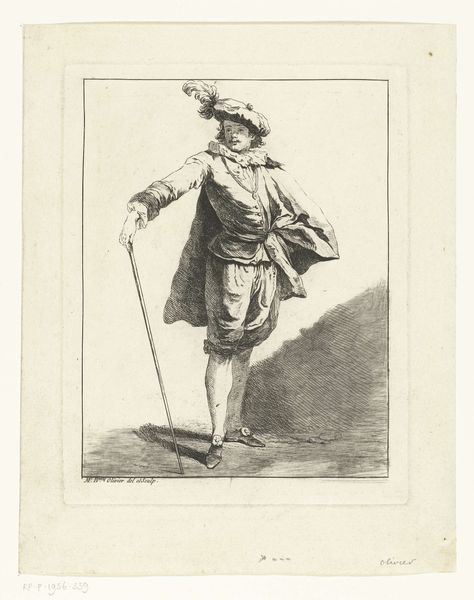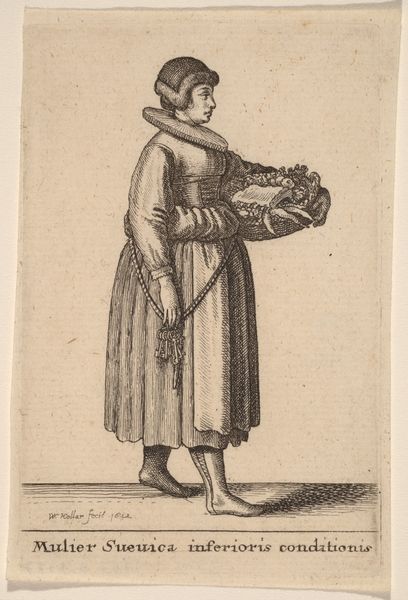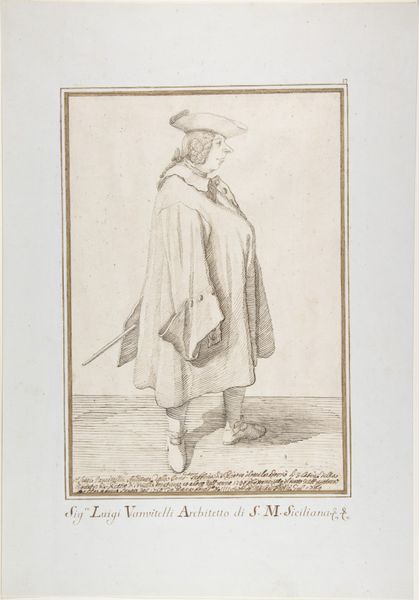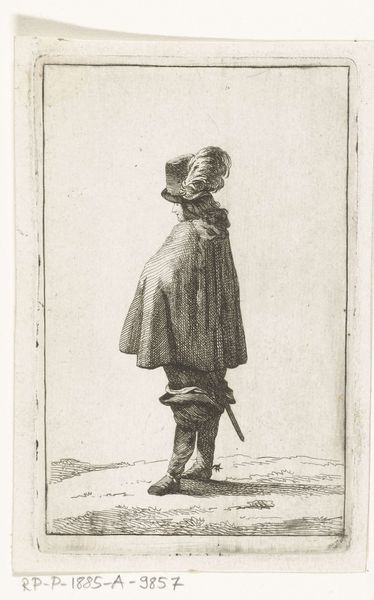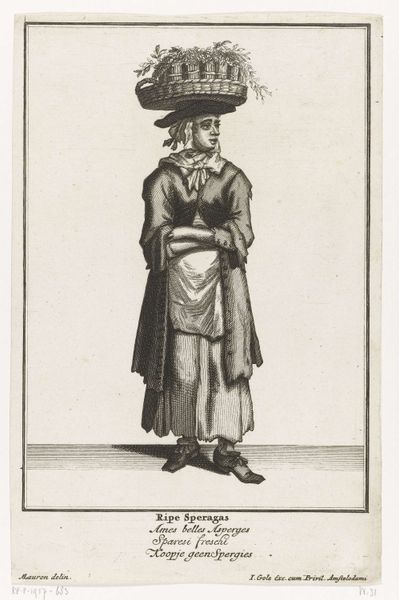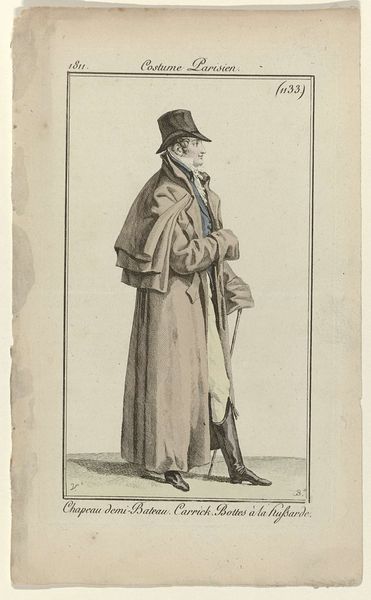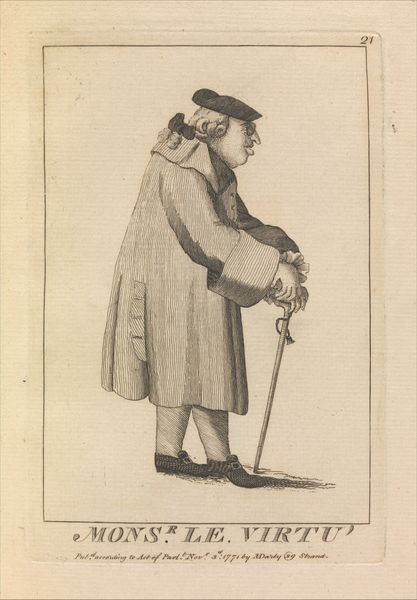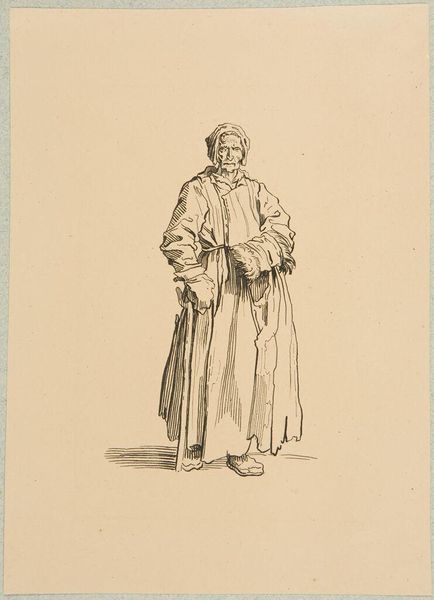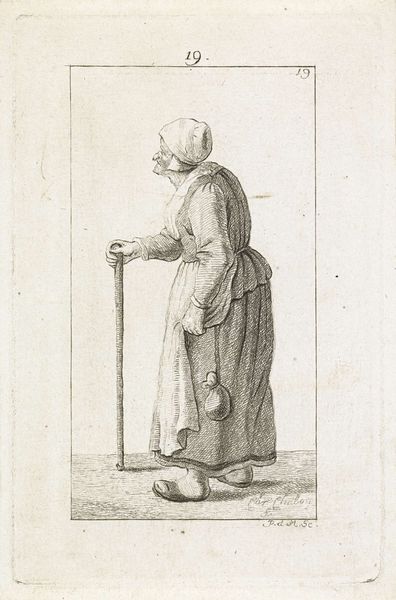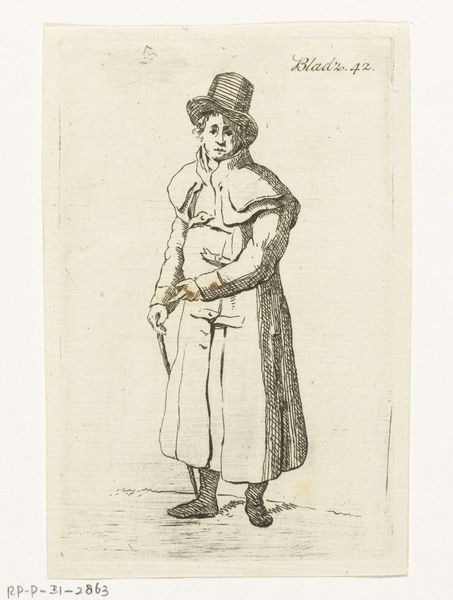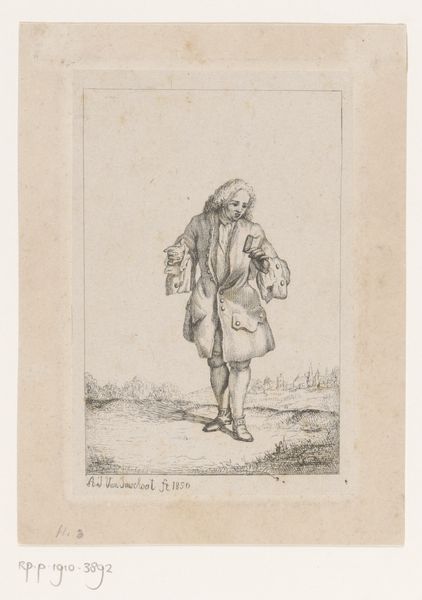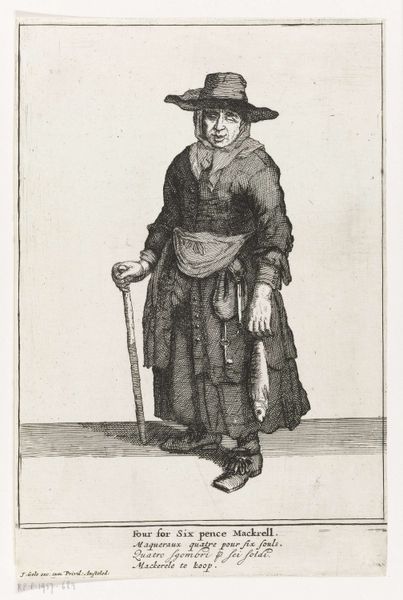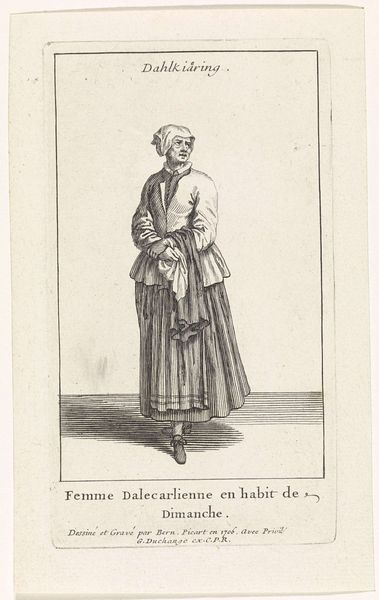
etching
#
portrait
#
baroque
#
etching
#
figuration
#
genre-painting
#
history-painting
Dimensions: height 209 mm, width 171 mm
Copyright: Rijks Museum: Open Domain
Editor: This is Thomas Worlidge's "Portret van Mary Squires," created between 1753 and 1755, currently held at the Rijksmuseum. It's an etching. The fine lines of the etching give it a delicate yet stark feel. I’m curious, focusing on the artistic merit, what draws your eye in this portrait? Curator: Indeed. Note how the artist employs line weight and density to articulate form. The varied etching strokes deftly render texture, from the rough fabric of Squires' clothing to the nuanced modeling of her face. Observe the strategic deployment of light and shadow achieved through this technique, creating a compelling visual drama. How does the relative balance of these effects inform our viewing experience, would you say? Editor: I see what you mean. The contrasting dark and light definitely define her face and clothing. So, beyond the technical skill, is the composition itself significant? The way she’s positioned, almost confrontational? Curator: Precisely! Consider the structural elements. The subject occupies a majority of the pictorial space. The artist directs the viewer’s attention through the carefully constructed composition, leading us to analyze her presence through the medium itself, the physical texture of the etching marks on the page, and the light as it renders them visible. It invites semiotic interpretation through structural means. The etching tool carves its statement to make meaning beyond representation. Would you agree that this tension serves a purpose? Editor: Definitely. Thinking about it that way, the textures almost create a story in themselves, even divorced from the subject's identity. It really makes you consider how the piece communicates beyond just being a portrait. Curator: Precisely. And how fortunate we are to witness.
Comments
No comments
Be the first to comment and join the conversation on the ultimate creative platform.
